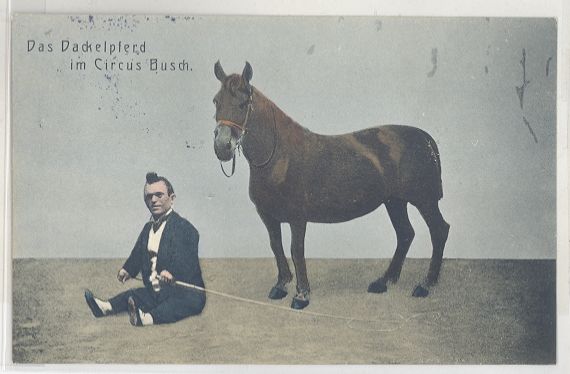Dwarfism, a medical condition characterized by short stature, affects individuals in various ways. People with this condition often face unique physical, social, and emotional challenges. While the term “dwarfism” is commonly used, it is essential to understand that it encompasses a wide range of conditions, each with its own causes and characteristics. This article explores the different types of dwarfism, their underlying causes, and the daily life challenges faced by those living with this condition.

What Is Dwarfism?
Dwarfism is defined as a medical or genetic condition that results in an adult height significantly below average. Typically, individuals with dwarfism are four feet ten inches or shorter. The condition can be caused by a variety of genetic and medical factors, and it manifests differently in each person. It is important to note that dwarfism is not a disease but rather a variation in human growth patterns.
Types of Dwarfism
There are over two hundred distinct types of dwarfism, each classified based on its specific characteristics and genetic origins. Below are some of the most common types:
Achondroplasia
Achondroplasia is the most prevalent form of dwarfism, accounting for approximately seventy percent of all cases. It is a genetic condition that affects bone growth, particularly in the limbs. Individuals with achondroplasia typically have short arms and legs, a larger head, and a prominent forehead. Despite these physical differences, people with achondroplasia generally have normal intelligence and life expectancy.
Diastrophic Dysplasia
Diastrophic dysplasia is another type of dwarfism that affects cartilage and bone development. It is characterized by short limbs, joint deformities, and spinal curvature. Unlike achondroplasia, diastrophic dysplasia often requires surgical intervention to address complications such as clubfoot or scoliosis.
Spondyloepiphyseal Dysplasia
Spondyloepiphyseal dysplasia primarily impacts the spine and the ends of long bones. Individuals with this condition may experience a range of symptoms, including short stature, vision problems, and hearing loss. Spondyloepiphyseal dysplasia can also lead to complications like arthritis later in life.
Hypochondroplasia
Hypochondroplasia is a milder form of dwarfism that is closely related to achondroplasia. It is characterized by short stature but with fewer physical abnormalities. Many individuals with hypochondroplasia may go undiagnosed because their symptoms are less pronounced compared to other forms of dwarfism.
Causes of Dwarfism
The causes of dwarfism vary depending on the specific type of condition. In general, dwarfism can be classified into two main categories: disproportionate dwarfism and proportionate dwarfism.
Disproportionate Dwarfism
Disproportionate dwarfism occurs when certain parts of the body, such as the limbs or torso, are shorter than others. This type of dwarfism is usually caused by genetic mutations that affect bone and cartilage development. Achondroplasia and diastrophic dysplasia are examples of disproportionate dwarfism.
Proportionate Dwarfism
Proportionate dwarfism, on the other hand, refers to a condition where the body is uniformly small. This type of dwarfism is often caused by hormonal deficiencies, such as a lack of growth hormone or thyroid hormone. In some cases, proportionate dwarfism can be treated with hormone therapy during childhood.
Genetic Factors
Many forms of dwarfism are inherited and result from genetic mutations. For example, achondroplasia is caused by a mutation in the FGFR3 gene, which regulates bone growth. In most cases, this mutation occurs spontaneously during conception, meaning that neither parent carries the gene. However, in some instances, the condition can be passed down from one generation to the next.
Environmental Factors
In rare cases, environmental factors such as malnutrition or exposure to toxins during pregnancy can contribute to the development of dwarfism. These external influences can disrupt normal fetal growth and result in short stature.
Daily Life Challenges
Living with dwarfism presents a unique set of challenges that can impact various aspects of daily life. These challenges often extend beyond physical limitations and include social, emotional, and practical considerations.
Physical Challenges
Individuals with dwarfism may face numerous physical challenges due to their condition. For example, they may encounter difficulties with mobility, as their shorter limbs can make it harder to reach objects or navigate certain environments. Additionally, many people with dwarfism experience chronic pain or discomfort caused by joint problems, spinal issues, or other complications.
- Difficulty reaching high shelves or operating standard-sized appliances
- Pain or discomfort from joint deformities or spinal curvature
- Increased risk of injuries due to balance issues
Social Challenges
Social interactions can also pose challenges for individuals with dwarfism. They may encounter prejudice, discrimination, or misunderstanding from others who are unfamiliar with their condition. Stereotypes perpetuated by media portrayals of people with dwarfism can further exacerbate these issues, leading to feelings of isolation or low self-esteem.
- Facing stares, comments, or inappropriate questions in public settings
- Dealing with misconceptions about intelligence or abilities
- Navigating relationships and building a sense of belonging
Emotional Challenges
The emotional toll of living with dwarfism should not be underestimated. Many individuals struggle with feelings of inadequacy or frustration due to societal expectations and norms. Children with dwarfism, in particular, may face bullying or exclusion at school, which can have lasting effects on their mental health.
- Coping with feelings of being “different” or “othered”
- Managing anxiety or depression related to social experiences
- Finding ways to build confidence and resilience
Practical Challenges
Everyday tasks that most people take for granted can require additional effort or adaptation for someone with dwarfism. From driving a car to using public transportation, individuals must often find creative solutions to overcome barriers in their environment.
- Modifying home spaces to accommodate shorter stature
- Using adaptive tools or equipment to perform daily activities
- Advocating for accessibility in public spaces and workplaces
Support and Resources
Despite the challenges associated with dwarfism, there are numerous resources available to help individuals and families navigate this condition. Support groups, advocacy organizations, and medical professionals play a crucial role in providing guidance, education, and community connections.
Support Groups
Support groups offer a safe space for individuals with dwarfism and their families to share experiences, advice, and encouragement. These groups often organize events, conferences, and workshops to foster a sense of belonging and empowerment.
Advocacy Organizations
Advocacy organizations work to raise awareness about dwarfism and promote inclusivity in society. They advocate for equal opportunities in education, employment, and healthcare while challenging stereotypes and promoting positive representation in media.
Medical Care
Access to specialized medical care is essential for managing the physical and health-related aspects of dwarfism. Orthopedic specialists, endocrinologists, and physical therapists can provide tailored treatment plans to address specific needs and improve quality of life.
Conclusion
While this article does not include a conclusion, it is clear that understanding dwarfism requires a comprehensive look at its types, causes, and the challenges faced by those living with the condition. By fostering awareness and empathy, society can create a more inclusive environment for individuals with dwarfism, allowing them to thrive and lead fulfilling lives.





